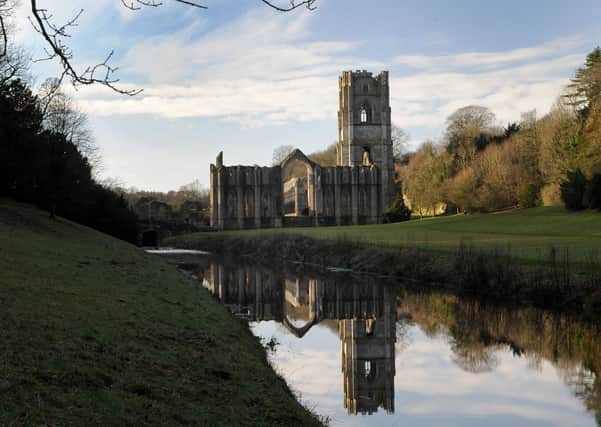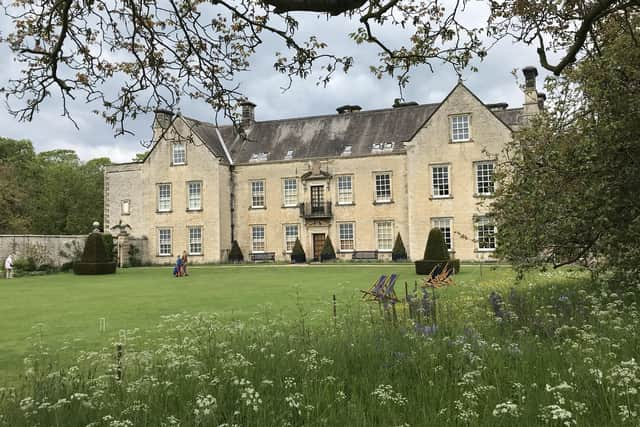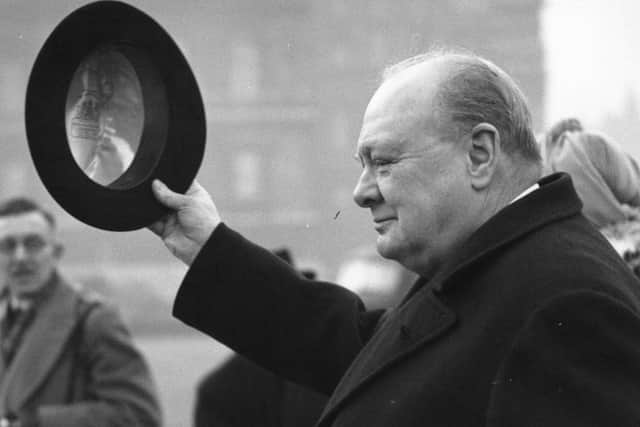What the National Trust’s slave trade report reveals about its Yorkshire properties


Back in 1711, the South Sea Company was devised by the Government as a way to help restructure the national debt with what to modern sensibilities was a reprehensible plan. It was granted a monopoly to trade enslaved Africans to the Spanish colonies and went on to transport 34,000 enslaved people to the West Indies and America. Around 4,000 died on the journeys.
Now the history of those involved in the company, which famously caused an economic bubble when its stock collapsed in 1720, is being re-examined as part of a National Trust initiative that has won both praise and condemnation for examining links between slavery and colonialism and its grand properties that were often paid for in part through the profits of such activities.
Advertisement
Hide AdAdvertisement
Hide AdAmong the places named in the 115-page interim report are Yorkshire’s Fountains Abbey and Studley Royal; Nunnington Hall, Nostell and Wentworth Castle Gardens.


The Fountains Abbey and Studley Royal entry focuses particularly on the chequered history of John Aislabie, who played a key role in setting up the South Sea Company, whose proposition was to take over the national debt in exchange for Government bonds.
The report explains: “Having received a £20,000 bribe in company stock in exchange for promoting the scheme, Aislabie negotiated the South Sea contract and got the bill passed in the House of Commons. He was serving as British Chancellor of the Exchequer when the South Sea Company collapsed in 1720. Aislabie was forced to resign the following year, shortly before a report into the collapse was published. He was found guilty of corruption, expelled from the House of Commons and imprisoned in the Tower of London.
“Aislabie was named directly in legislation produced by Parliament that the estate of individuals implicated in the South Sea Company corruption should be confiscated. However, since he had owned Studley Royal prior to his deception, he was afforded a dispensation allowing him to keep the property he possessed – around £119,000 out of an estate estimated to be worth £164,000. After his release, he retired from political life to Studley Royal, where he focused on the transformation of his gardens.”
Advertisement
Hide AdAdvertisement
Hide AdThe interim report was published in late September but has been back in the news in recent days after a backlash against it from many members at the trust’s AGM (where it was described variously as a “witch hunt” to part of a “woke agenda”) was followed by an open letter from 22 Conservative politicians – including several from Yorkshire – claiming the trust had “implicitly tarnished” Winston Churchill by including him and his family home of Chartwell in the report.


The letter from members of the recently-formed ‘Common Sense Group’ of Conservatives published on November 9 went on to add; “History must neither be sanitised nor rewritten to suit ‘snowflake’ preoccupations. A clique of powerful, privileged liberals must not be allowed to rewrite our history in their image.”
Two days later, Hilary McGrady, director-general of the National Trust, published a blog post which while not directly referencing the MPs’ letter stated “some of our oldest institutions and independent charities have become a battle ground in so-called ‘culture wars’.”
She added: “Surrounding organisations that millions of people care about – and some of our most fierce critics are those who care a great deal – there will always be debate about how progress is to be made. And we welcome debate – that’s part of being a membership organisation. But the polarisation of views and quality of debate today surrounding charities and independent organisations right now feels different.
Advertisement
Hide AdAdvertisement
Hide Ad“In recent months, I’ve received hundreds of letters and emails expressing all kinds of views about the many decisions we make every day – from passionate support, to vicious threats. It’s the same picture on social media.


“Upsetting anyone is of course a matter of regret for me. Our founders wrote that we exist for the benefit of the nation. I take that seriously and I would never want anyone to feel at odds with an institution that is there to serve them. Cultural organisations should be places where people can find common ground.”
The trust insist that its current work in this area is an attempt to provide further factual information and greater context around the history of its properties. The report has led to updates to information displays at houses and on websites but John Orna-Ornstein, director of culture and engagement for the trust, told the AGM visitors would not be seeing “enormous changes”. He added that he sees the process as a “normal part” of the organisation’s work to explore the different aspects of the history of its properties in the information it provides to visitors.
The report also examines another key figure in the South Sea Company story – diplomat Thomas Wentworth, who owned Wentworth Castle, in South Yorkshire, from 1708 to 1739.
Advertisement
Hide AdAdvertisement
Hide Ad“In 1711, Wentworth was appointed as joint negotiator for the Treaty of Utrecht,” it explains. “As part of these negotiations in 1713, Britain signed a contract with Spain giving it exclusive rights, through the South Sea Company, to supply enslaved Africans to the Spanish territories, known as the asiento de negros. Wentworth considered Utrecht to represent the high point of his diplomatic career.”
Objections to the morality of slavery eventually led to the Slavery Abolition Act of 1833 but it was done in such a way that compensated slave owners rather than the enslaved. The Act made provision for £20 million to be paid in compensation to the owners of ‘slave property’ – which would equate to over £100 billion in today’s money. Over 45,000 claims for compensation were made, relating to 800,000 enslaved people.
The report examines the history of the Rutson family, who were involved in slave trading. Two years after the Slavery Abolition Act was passed, the family company received almost £2,800 in compensation for a sugar plantation in Antigua and 213 enslaved people.
The Trust report explains: “William Rutson purchased Nunnington Hall in North Yorkshire in 1839, settling his family’s wealth in a respectable property which the family used as a sporting lodge.”
Advertisement
Hide AdAdvertisement
Hide AdThe report also touches on Nostell Priory, in West Yorkshire, which was owned in the first half of the 18th Century by Sir Rowland Winn, who is believed to have invested in both the South Sea Company and the East India Company. It also explains that cabinetmaker Thomas Chippendale supplied much of the furniture and furnishings at Nostell using materials like mahogany which had been created by enslaved people.
Changes have been made to the websites for Wentworth Castle Gardens and Nunnington to reflect on the slave trade links, while at Nostell there is new information on about the mahogany trade.
A spokesperson for the Trust says: “The research is being used to support new interpretation and presentation at properties, and new digital content online to help us embed these stories into our current narratives as part of the stories we tell at our places.
“The report will also help us to engage more fully with academics and other partners, with individuals and communities, and with the general public, to explore together some of the stories that have been forgotten, hidden or overlooked.”
Advertisement
Hide AdAdvertisement
Hide AdThe Trust says members are generally supportive of its approach to the issue.
“We undertook a programme of audience research in June 2020 with a mixed sample of National Trust supporters, members, visitors and the general public.
“Key findings were that they want us to explore these stories, including those that are sensitive or controversial, provided they are authentic to the specific place, interwoven into the wider story of that place, that interpretation is based on sound historical research and that we help them to explore and draw conclusions for themselves.
“The legacies of slavery and colonialism are reflected in the nation’s places, buildings and collections, including those looked after by the National Trust, and we are committed to uncovering, exploring and sharing these histories at the places we care for.
Advertisement
Hide AdAdvertisement
Hide Ad“This report is an overview of current research into these connections which we want to share publicly and widely and is part of our commitment to tell inclusive stories that reflect the whole of society.”
Churchill’s inclusion at centre of row
The inclusion of Sir Winston Churchill in the report in connection with colonialism has been among its most controversial aspects.
The report states: “Sir Winston Churchill (1874–1965), whose family home is Chartwell [a National Trust property in Kent], served as Secretary of State for the Colonies from 1921 to 1922. He was Prime Minister during the devastating Bengal Famine of 1943, the British response to which has been heavily criticised.
“Churchill opposed the Government of India Act in 1935, which granted India a degree of self-governance. On 1 July 1947, he wrote to Prime Minister Clement Attlee (1883–1967), arguing that India should not gain independence.
Advertisement
Hide AdAdvertisement
Hide Ad“The passing of the Indian Independence Act on 18 July 1947 saw the partition of British India and the creation of the independent nations of India and Pakistan. Three hundred years of colonial rule ended.”
Another entry specifically about Chartwell reads: “Chartwell was the family home of Sir Winston Churchill (1874–1965) from 1922 until his death.
“One of the longest-serving political figures in British history, he was Prime Minister twice (1940–5 and 1951–5), famously during the Second World War – a period that coincided with the Bengal Famine of 1943.
“Leading historians, such as Robert Rhodes James, comment that Churchill lived an ‘exceptionally long, complex, and controversial life’. He served as Secretary of State for the Colonies (1921–2) and helped to draft the Anglo-Irish Treaty at the time of the creation of the Irish Free State. However, Churchill opposed the granting of Dominion status to India, voting against the India Bill in 1935.”
Advertisement
Hide AdAdvertisement
Hide AdSupport The Yorkshire Post and become a subscriber today. Your subscription will help us to continue to bring quality news to the people of Yorkshire. In return, you’ll see fewer ads on site, get free access to our app and receive exclusive members-only offers. Click here to subscribe.
Comment Guidelines
National World encourages reader discussion on our stories. User feedback, insights and back-and-forth exchanges add a rich layer of context to reporting. Please review our Community Guidelines before commenting.